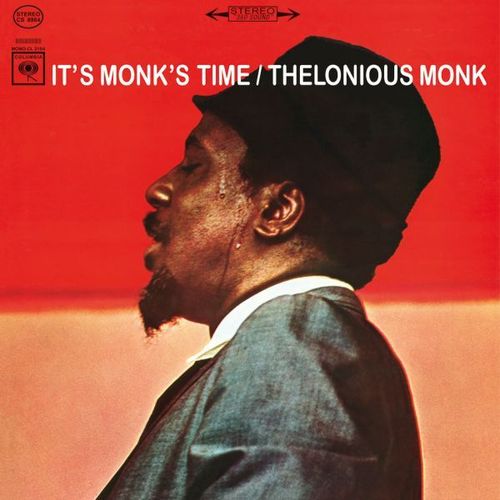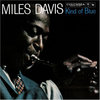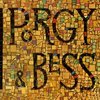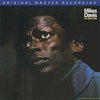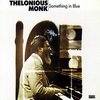AAA 100% Analogue This LP was Remastered using Pure Analogue Components Only from the Master Tapes through to the Cutting Head
Speakers Corner / Columbia CS 8984 - 180 Gram Virgin Vinyl - AAA 100% Analogue
Mastered by Willem Makkee at Emil Berliner
Limited Edition - Pressed at Pallas Germany
This Speakers Corner LP was remastered using pure analogue components only, from the master tapes through to the cutting head 30 Years pure Analogue
"This is as close as jazz comes to rock'n'roll in my opinion: it's muscular, straight to the point (within the bounds of Monk's rhythmic madness/genius) and gets the toe tapping and the blood flowing. I don't think jazz offers more fun listening than Monk." - Michael Fremer, analogplanet Music 8/10, Sound 8/10!
HIFI Plus Sound 8/10 Music 10/10
With its three compositions by Thelonious Monk, one might call this LP from 1964 “3 Standards and 3 Monks”. The 'High Priest' of bebop had reached a further pinnacle in his career and performed with his fantastic, skilful and well-rehearsed quartet at numerous festivals and concerts. As if in a dream, the musicians penetrate the apparently simple yet rhythmically complicated themes, interrupted again and again by Monk’s solo escapades on the piano. On the stage, Monk often stood up and jigged around the piano like a lumbering dancing bear, with one of his distinctive hats on his head; he plonks down on the piano stool after the Charlie Rouse solo; his enormous feet tap back and forth to the beat; he constantly fiddles with the ring on his finger; and he creates the most wonderful improvisations ever heard with his 'false' fingering.
Although often unrightfully maligned by self-proclaimed "purists," Thelonious Monk did some brilliant work during his early- to mid-'60s stint for Columbia Records. It's Monk's Time (1964) contains some of the best -- if not arguably the best -- studio sides that the pianist cut during his final years as a recording musician. The album's title turned out to be somewhat prophetic, as Time magazine featured Monk as the cover subject for its February 28, 1964, edition. Interestingly, he was to have been profiled by the periodical the previous November; however, the assassination of then-President John F. Kennedy took obvious precedence. It had been almost a full year since his previous studio release, Criss-Cross (1963), and there had been a significant alteration in the rhythm section, which now incorporated the respective talents of both Butch Warren (bass) and Ben Riley (drums) as well as longtime cohort Charlie Rouse (tenor sax). From four sessions in early 1964, It's Monk's Time gathers four quartet and two solo sides, presenting the pinnacle of what these musicians offered stylistically as well as from the standpoint of presentation.
There is sense of mischievous playfulness in Monk's nimble keyboard work, especially notable on the beautifully off-kilter unaccompanied opening to "Lulu's Back in Town," and the same practically impish quality also drives the solo performance on "Nice Work if You Can Get It." Both pop standards are prime examples of the bop pioneer's inimitable approach to arranging, and also provide an uncanny insight to his influences. Immediately evident are the styles of stride legends from the well-known Willie "The Lion" Smith and James P. Johnson to the slightly more obscure and decidedly frenetic playing of Cliff Jackson, as well as the ragtime approach of Walter L. Rose. The results are bound together in Monk's arithmetically advanced delivery and harmonic composition. The combo -- especially Rouse -- effectively supports and punctuates the tricky timing of "Stuffy Turkey" and the more aggressive bop of "Brake's Sake." The latter title also unleashes some tasty interaction between Monk and Rouse, sonically exemplifying their practically single-minded synergy. The concluding cut, "Shuffle Boil," is one of the lost gems of the artist's later work. It sports an effortless swing over a sophisticated and challenging melodic structure. Bassist Warren steps up to the plate, providing a supple and pulsating bed for both Monk and Rouse as they trade solos.
Calling all jazz fans: Listen to Thelonious Monk, and you will have a ball – most especially if you put this super disc with the promising title "It’s Monks Time" on your turntable!
Musicians:
- Thelonious Monk (piano)
- Charlie Rouse (tenor saxophone)
- Butch Warren (bass)
- Ben Riley (drums)
- Teo Macero (producer)
Recording: January - March 1964 Production: Teo Macero
Track Listing:
1. Lulu's Back In Town
2. Memories Of You
3. Stuffy Turkey
4. Brake's Sake
5. Nice Work If You Can Get It
6. Shuffle Soil
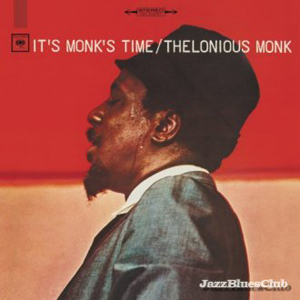
20 Years pure Analogue
This Speakers Corner LP was remastered using pure analogue components only, from the master tapes through to the cutting head 20 Years pure Analogue
Are your records completely analogue?
Yes! This we guarantee!
As a matter of principle, only analogue masters are used, and the necessary cutting delay is also analogue. All our cutting engineers use only Neumann cutting consoles, and these too are analogue. The only exception is where a recording has been made – either partly or entirely – using digital technology, but we do not have such items in our catalogue at the present time
Are your records cut from the original masters?
In our re-releases it is our aim to faithfully reproduce the original intentions of the musicians and recording engineers which, however, could not be realised at the time due to technical limitations. Faithfulness to the original is our top priority, not the interpretation of the original: there is no such thing as a “Speakers Corner Sound”. Naturally, the best results are obtained when the original master is used. Therefore we always try to locate these and use them for cutting. Should this not be possible, – because the original tape is defective or has disappeared, for example – we do accept a first-generation copy. But this remains an absolute exception for us.
Who cuts the records?
In order to obtain the most faithful reproduction of the original, we have the lacquers cut on the spot, by engineers who, on the whole, have been dealing with such tapes for many years. Some are even cut by the very same engineer who cut the original lacquers of the first release. Over the years the following engineers have been and still are working for us: Tony Hawkins, Willem Makkee, Kevin Gray, Maarten de Boer, Scott Hull, and Ray Staff, to name but a few.
At the beginning of the ‘90s, in the early days of audiophile vinyl re-releases, the reissue policy was fairly straightforward. Companies such as DCC Compact Classics, Mobile Fidelity, Classic Records and others, including of course Speakers Corner, all maintained a mutual, unwritten code of ethics: we would manufacture records sourced only from analogue tapes.
Vinyl’s newfound popularity has led many other companies to jump on the bandwagon in the hope of securing a corner of the market. Very often they are not so ethical and use every imaginable source from which to master: CDs, LPs, digital files and even MP3s.
Even some who do use an analogue tape source employ a digital delay line, a misguided ’80s and ‘90s digital technology that replaces the analogue preview head originally used to “tell” the cutter head in advance what was about to happen musically, so it could adjust the groove “pitch” (the distance between the grooves) to make room for wide dynamic swings and large low frequency excursions. Over time analogue preview heads became more rare and thus expensive.
So while the low bit rate (less resolution than a 16 bit CD) digital delay line is less expensive and easier to use than an analogue “preview head”, its use, ironically, results in lacquers cut from the low bit rate digital signal instead of from the analogue source!
Speakers Corner wishes to make clear that it produces lacquers using only original master tapes and an entirely analogue cutting system. New metal stampers used to press records are produced from that lacquer. The only exceptions are when existing metal parts are superior to new ones that might be cut, which includes our release of “Elvis is Back”, which was cut by Stan Ricker or several titles from our Philips Classics series, where were cut in the 1990s using original master tapes by Willem Makkee at the Emil Berliner Studios. In those cases we used only the original “mother” to produce new stampers.
In addition, we admit to having one digital recording in our catalogue: Alan Parsons’ “Eye in the Sky”, which was recorded digitally but mixed to analogue tape that we used to cut lacquers.
In closing, we want to insure our loyal customers that, with but a few exceptions as noted, our releases are “AAA”— analogue tape, an all analogue cutting system, and newly cut lacquers.
60 Years Pallas
Audiophile Vinyl - Made in Germany For over 60 years the family business in the third generation of the special personal service and quality "Made by Pallas" is known worldwide. Our custom PVC formulation produces consistently high pressing quality with the lowest surface noise in the industry. Our PVC complies with 2015 European environmental standards and does not contain toxic materials such as Lead, Cadmium or Toluene. Our vinyl is both audiophile and eco-grade!
